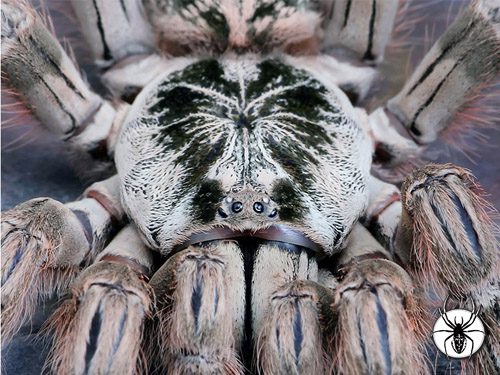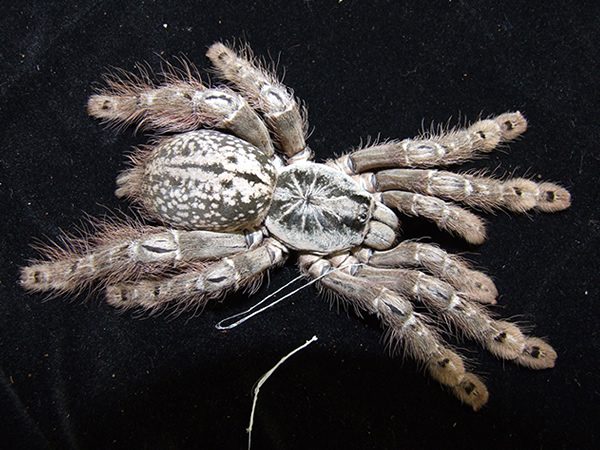Heteroscodra maculata
Togo Starburst (6-8cm)
POCOCK, 1899
Species Info:
Origin
Lifestyle
Temp
Humidity
Leg Span
Disposition
Suitability
This ornamental spider is a stunning in appearance despite only being a combination of shades of white, grey and with black brown patterning on the carapace, legs and body. This is a very robust species compared to other arboreal like Avicularia spp. as it has short and stout legs. It must be kept in a typical arboreal setup with plenty of vertically orientated decor like cork bark or bamboo to climb on. Its retreat will be densely clothed with web. You must provide this species with a water bowl and regular misting is needed. A thick layer of substrate is useful in help maintain the correct humidity. This species is well camouflage and sometimes can be hard to see when resting against cork bark. It is also bad tempered, shy and highly defensive. When disturbed it may try and hide of escape but will most likely bite.
In the wild this species inhabits humid forested areas and thick wooded Savannahs where it spins arboreal silken retreats amongst the leaf, hollows and other natural trunk cavities of short palm trees which it prefers to live in. Here it is also finds it prey and feeding on geckos has been observed (Carpenter, 1992). This species is very similar to Stomatopelma calceatum but can be distinguished from this species by thicker rear legs. Breeding this species is unproblematic, they produce a fixed type eggsack which is usually attached to the side of the retreat and contains around 150 eggs. The resulting offspring are small and very hairy and they usually utilize ground retreats and will dig holes in the substrate to hide and catch prey from. The spiderlings are very fast and have a very quick growth rate. This species though not suited to beginners makes an excellent addition to any collection.


